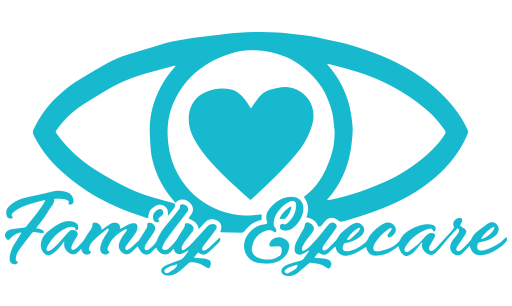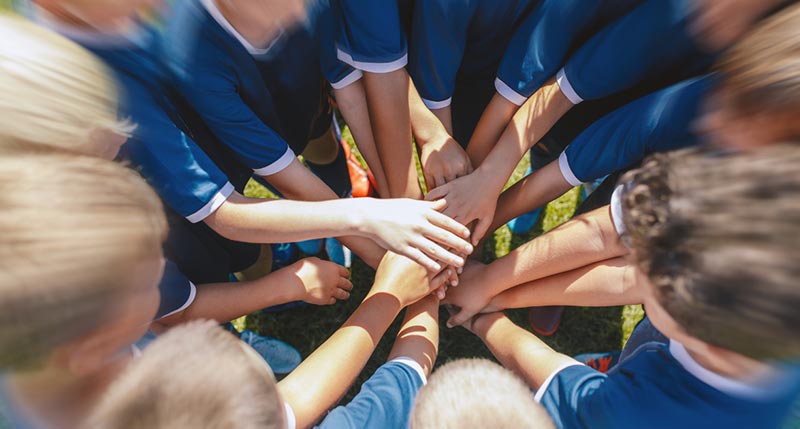As parents of a student athlete, you try to do all the right things to protect your kids — ensuring they wear helmets, shin guards, football pads, batting helmets, mouth guards, knee braces, wrist stabilizers, and a myriad of other devices that protect your student in action. While all of these things are indeed important, sometimes parents forget that protecting your child’s eyes should top the list!
One of the leading causes of blindness in children is eye injury. According to the National Eye Institute, 90% of sports-related injuries could have been prevented by wearing protective eyewear.
Every 13 minutes in the U.S., an emergency room treats a sports-related eye injury! Flying pucks, poking fingers, whizzing balls, and errant elbows can definitely do damage to the delicate tissues of the eye. So, as a parent, you need to know what you can do to protect your kid’s eye health and safety while they enjoy their favorite sport.
Some sports require protective goggles, face masks, or other protective eyewear, while others do not. Even if your child’s chosen sport doesn’t require protective eyewear, it’s a best practice to understand when and how to protect their eyes from injury.
Four Types of Sports-Related Eye Injuries
- Penetration: When a foreign object penetrates or cuts into the eye — fingers, splinters from broken bats, or broken pieces of sports equipment are all potential culprits. Penetrating injuries are very serious, and can often result in severe eye damage that must be treated quickly to preserve vision.
- Blunt Trauma occurs when an object hits with force and compresses the eye — such as a ball hitting the face, which could cause a ruptured eye globe, orbital fracture, black eye, or detached retina. Severe blunt trauma to the eye could lead to vision loss.
- UV Radiation: Intense UV radiation exposure can actually “sunburn” eye tissue, resulting in photokeratitis, a painful, temporary condition from too much sun or reflected rays. Sports such as snow skiing, water skiing, boating, and fishing pose a UV risk to unprotected eyes. And while the pain is temporary, consider the potential long-term damage resulting from UV overexposure that shows up later in life in conditions such as cataracts, macular degeneration, and skin cancers around the eyes.
- Corneal abrasions are painful scrapes on the outside of the eye’s surface (the cornea), often caused by a finger or fingernail. Most abrasions eventually heal on their own, but should be assessed by your optometrist for severity and treatment.
Injuries ranging from a corneal abrasion to permanent vision loss can cause physical and emotional damage to your student. As a parent, you’ll want to know what types of eye protection lower the chances of your student suffering an unnecessary eye injury.
What Parents Should Know About Sports Eye Protection
Various sports pose different levels of risk where eye injury is concerned. It’s important to use the right kind of eye protection for the sport your athlete plays. It’s also good to know what doesn’t protect their eyes in a sports scenario: Your student’s “regular” eye glasses or sunglasses! In some cases, “regular” glasses can shatter or splinter and cause a more serious injury.
What is the Best Eye Protection for Student Athletes?
Look for sports glasses or goggles (some types can be worn over eyeglasses) made with polycarbonate lenses — the gold standard of sports eye protection.
Polycarbonate lenses are lightweight, impact-resistant plastic made to resist shattering when struck by an outside force. These lenses are up to 10 times more impact-resistant than plastic or glass lenses.
And the bonus? They also provide UV protection essential for outdoor sports, and can be treated with a scratch-resistant coating to prolong their life.
Another option to consider: Sports goggles can be custom-made with your child’s prescription, so your athlete won’t need to wear eyeglasses under their goggles — providing the convenience of eye protection and clear vision all rolled into one!
Proper fit for sports goggles is essential. If the protective lenses slide down, or over, or under their eyes, your student athlete isn’t going to wear them; you’ll find them at the bottom of their athletic bag. Sport goggles need to fit snugly without pinching. The fit must be comfortable and secure to protect their eyes.
Sport glasses with protective lenses come in various styles, lens tints, and shapes. Some offer a strap to ensure that they stay in place during competition. All of these options make it easy for your athlete to choose protective eyewear that they like and will wear.
Common Mistakes Parents Make in Protecting Student Athlete Eyes
- Relying on regular eyeglasses or sunglasses for protection during athletic play.
- Thinking helmets with visors will offer full eye protection (not always). Visors must be made of polycarbonate to offer full protection from impact.
- Skipping eye protection for “non-contact” sports — where accidents can still happen.
Your optometrist can help guide you in choosing the most effective fit for the specific sport your athlete plays and also screen for vision problems that could potentially affect sports performance and safety.
Finding the right protective sports eyewear could prevent a life-impacting vision injury for your child.
Make eye safety a priority this year by calling our office today to schedule a pre-season eye exam, and ask about protective eyewear options for your athlete and their favorite sport!

